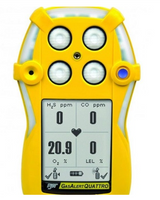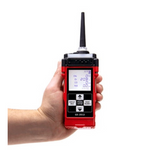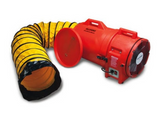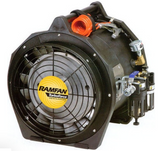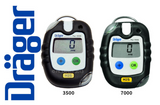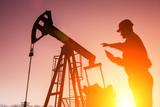Blog
BW Quattro 4-Gas Monitor Low Cost of Ownership
When considering which personal gas monitors to use for your facility the long-term cost of ownership is going to be at the top of your list. Replacing sensors and hardware over time can be expensive, but so can replacing entire monitors. The
BW Quattro has a two-year sensor warranty which makes it a popular choice for companies who like to know when costs are likely to occur.
When considering the right monitor for your operation, you need to take into account a few critical bits of
…
Feb 18th 2015
Bump Test Gas Cylinder: How Many Bump Tests Do I Get From a Cylinder of Gas?
A good customer (all our customers are good, of course) recently asked us to figure out exactly how many bump tests they would get from a
58L of NIST Traceable Gas for their new Gas Clip Technologies Multi Gas Clip (MGC) Monitors (with 2 month battery charge life). The quick answer - a little over 300, and maybe as many as 600. But there's a catch.
Calibration gas has a shelf like. It's longer than a gallon of milk, but still shorter than you might expect. The 4-gas mixture for
…
Jan 28th 2015
Gas Detector Bump Test: Bump Testing and Calibration of your Gas Monitors
Gas monitors need regular calibration and bump testing if you want to be sure they are working properly. Like a guitar, monitors can drift out of tune. You've got a couple of choices to get it working properly. And as everyone who owns a gas monitor knows - whether it's a multi-gas monitor like the GasAlert Micro Clip XT, or a single-gas monitor like the
Gas Clip Technologies H2S Monitor - a quick bump test before using it to protect your life is an excellent, and highly recommen
…
Jan 14th 2015
Getting The Right Gas Monitor For Your Company
Gas detection is serious business no matter what type of work you do. Your company may not need the level of protection a petroleum production facility requires, but every company using gas detection technology wants to make a good investment in their monitors. Some work sites need to know if hydrogen sulfide levels change even a small percentage. Others are fine waiting for the alarm to sound. The differences in your gas monitoring needs will affect the type of gas monitor that's right for y
…
Oct 29th 2014
Top Ten Things to Consider When Entering a Confined Space
Because of the speed with which a worker can become incapacitated, confined spaces require more safety considerations than typical work sites. Anyone entering a place without adequate ventilation must take precautions for their safety. This is especially true for confined spaces where pooling gases or lack of breathable atmosphere combined with difficult entry and exit can prove fatal.
The Occupational Health and Safety Administration (OSHA) has developed guidelines for safety before an
…
Oct 11th 2014
What is Industrial Confined Space Rescue?
Anyone regularly working in confined spaces knows they can be dangerous; yet confined space work is crucial to a wide variety of industries. When work is being performed in confined spaces, rescue plans must be in place in the event of an accident. Petrochemical sites such as oil rigs, refineries and drug manufacturers need regular site inspection and maintenance; wastewater treatment plants, or other businesses requiring workers to go down into the sewers or tanks also require frequent confi
…
Oct 3rd 2014
Confined Space Entry – What to Take When You Go
There are some tools and equipment that anyone performing confined space entry must have to ensure the safety of their workers. Whether your company has determined that confined space procedures need to be developed for your on-site hazards, or if you are a contractor performing a one-time job, equipment such as a gas detector, ventilation fan, harness, tripod and winch will be essential for you or your worker’s safety.
Gas monitors are used to test the atmosphere before entry into the conf
…
Sep 19th 2014
Silent and Deadly, Proper Gas Detection Saves Lives
I’m fascinated about the basics of atmospheric monitoring, how to change the air in a confined space by supplying ventilation, and effective uses of ducting. Aren’t you? Relying solely on your nose (no matter how magnificent it may be) is not the right method to detect airborne hazards. Many gases dull the senses over time, and only a proper gas detection unit with a test probe can properly asses the atmosphere of a confined space.
The shape and location of many confined spaces make them
…
Sep 14th 2014
Draeger Pac 3500 and Pac 7000 Monitors Really Are Different
Draeger has created some of the most widely used and accurate industrial gas detection devices in history. But many of the
single-gas units look exactly alike. What are the differences and why are they trying to confuse us?
We've all heard it's what's on the inside that counts. That is especially true for the Draeger
Pac 3500 and Pac 7000 single gas monitors. The housings are exactly the same, and at a glance you'd be hard pressed to tell the difference. But these two monitors var
…
May 27th 2014
Oilfield Safety Equipment: PPE for Oil and Gas Production Workers
With oil production continuing to expand in areas like Midland, Texas and The Bakken, OSHA regulators haven't been far behind. It's not just drillers and chainhands that fall under the protection guidlines, but toolhands and other contractors who need to be fully equipped to deal with the health hazards associated with oil and gas extraction. We're going to take this space to discuss the personal protective equipment (PPE) that takes care of the OSHA requirements.
In addition to those w
…
Mar 24th 2014


